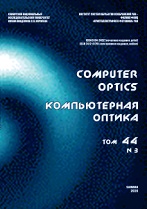|
This article is cited in 9 scientific papers (total in 9 papers)
IMAGE PROCESSING, PATTERN RECOGNITION
X-ray tomography: the way from layer-by-layer radiography to computed tomography
V. L. Arlazarovab, D. P. Nikolaevac, V. V. Arlazarovab, M. V. Chukalinaac
a Smart Engines Service LLC
b Federal Research Center "Computer Science and Control" of Russian Academy of Sciences, Moscow
c Institute for Information Transmission Problems of the Russian Academy of Sciences (Kharkevich Institute), Moscow
Abstract:
The methods of X-ray computed tomography allow us to study the internal morphological structure of objects in a non-destructive way. The evolution of these methods is similar in many respects to the evolution of photography, where complex optics were replaced by mobile phone cameras, and the computers built into the phone took over the functions of high-quality image generation. X-ray tomography originated as a method of hardware non-invasive imaging of a certain internal cross-section of the human body. Today, thanks to the advanced reconstruction algorithms, a method makes it possible to reconstruct a digital 3D image of an object with a submicron resolution. In this article, we will analyze the tasks that the software part of the tomographic complex has to solve in addition to managing the process of data collection. The issues that are still considered open are also discussed. The relationship between the spatial resolution of the method, sensitivity and the radiation load is reviewed. An innovative approach to the organization of tomographic imaging, called “reconstruction with monitoring”, is described. This approach makes it possible to reduce the radiation load on the object by at least 2–3 times. In this work, we show that when X-ray computed tomography moves towards increasing the spatial resolution and reducing the radiation load, the software part of the method becomes increasingly important.
Keywords:
computer tomography, data size, radiation load, monitored reconstruction
Received: 29.03.2021
Accepted: 26.07.2021
Citation:
V. L. Arlazarov, D. P. Nikolaev, V. V. Arlazarov, M. V. Chukalina, “X-ray tomography: the way from layer-by-layer radiography to computed tomography”, Computer Optics, 45:6 (2021), 897–906
Linking options:
https://www.mathnet.ru/eng/co981 https://www.mathnet.ru/eng/co/v45/i6/p897
|

| Statistics & downloads: |
| Abstract page: | 48 | | Full-text PDF : | 40 |
|




 Contact us:
Contact us: Terms of Use
Terms of Use
 Registration to the website
Registration to the website Logotypes
Logotypes








 Citation in format
Citation in format 
